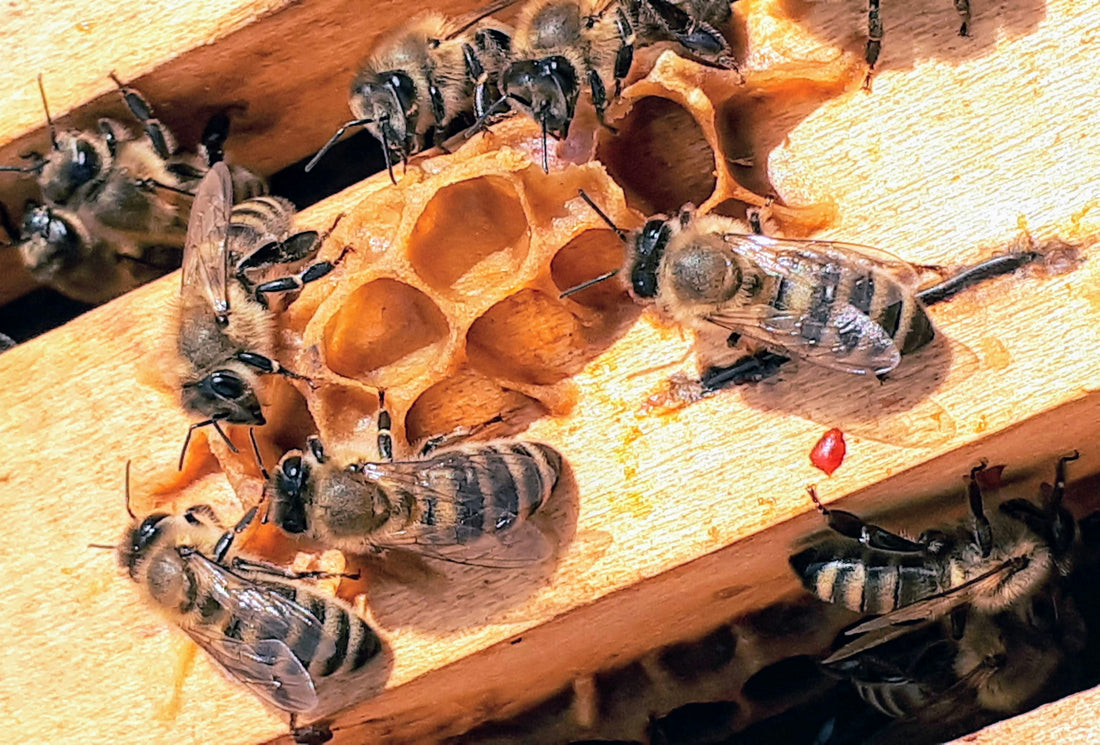Blog by Dr Nia Owen
As Spring arrives here in Devon, there are lots of signs of the new life and activity associated with this season. Amongst the blooming wild and garden flowers and the emerging crops in the fields, honeybees play a crucial role in our countryside ecosystems. But have you ever wondered what these industrious insects are up to at this time of year?

First signs of Spring
Photo by Sophie Grieve-Williams on Unsplash
With the arrival of warmer temperatures, our honeybee colonies are bouncing back to life after a period of winter dormancy in their hives. The queen bee, having survived the cold months, is now actively laying eggs to replenish the colony's workforce. Honeybee numbers will be rapidly expanding from their low Winter numbers of about 5,000 towards their Summer peak of 40-50,000. As Spring flowers begin to bloom across the region, honeybees embark on their vital task of foraging for nectar and pollen. You may have noticed increasing numbers of bees flying on warm and fine days over recent weeks as they leave their hives to find food sources. Sometimes, a close inspection of a honeybee’s legs will reveal brightly coloured clumps of pollen attached to their limbs. As beekeepers, we can use these clumps of pollen as visual clues as to what sorts of plants our bees have been visiting.

Bees returning to their hive, laden with pollen.
Photo by Kai Wenzel on Unsplash
Scientific research (https://botanicgarden.wales/2017/02/honey-bees-like-living-close-hedge-official/) looking at the DNA of the pollen that is found in Spring honeys, has shown that hedgerow plants and wildflowers such as dandelions, hawthorn and willow are some of the plants most favoured by honeybees in Spring. Foraging on these species not only sustains the colony but also plays a crucial role in pollination, helping plants to reproduce and thrive. The nectar and pollen collected on these foraging missions will be stored in the hive as food reserves. These resources sustain the colony during periods of scarcity and provide essential nourishment for raising new generations of bees.

UK Spring flowers provide forage for our honeybees.
Photo by Nick Gordon on Unsplash
Within the hive too the hard work continues. Worker bees are busy maintaining the structure and cleanliness of their home. As part of their duties they repair combs, regulate temperature and humidity levels, and defend against intruders such as pests and predators.

Honeybees are industrious insects, seen here carrying out their duties within the hive.
Photo by Boba Jaglicic on Unsplash
Spring is also a busy time of year for us as beekeepers. In order to ensure the best care and conditions for our bees we will monitor our hives closely. This will involve tasks such as conducting hive inspections, monitoring bee health and checking that the queen bee is laying eggs consistently.
As we enjoy the beauty of springtime in the UK, it's important to appreciate the vital role that honeybees play in our environment. From pollinating flowers to producing delicious honey, these remarkable insects are hard at work ensuring the health and vitality of our ecosystems. By understanding what UK honeybees are up to now, we can better appreciate and support these essential pollinators and, in turn, help to conserve our wild habitats and species.
